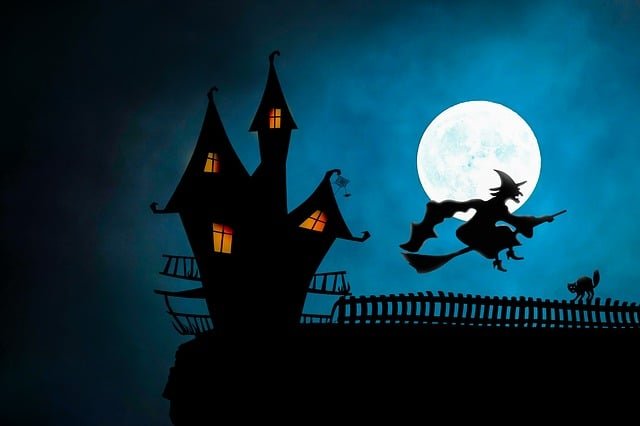Halloween in Spain
This post may contain affiliate links at no extra cost to you to click on, but any purchase helps support my blog
Just how does Spain celebrate Halloween?
Halloween in Spain is very different from anywhere else I have known and in true Spanish style, it’s a 3-day celebration. However, the different regions appear to have very different takes on how to mark the occasion.
There appears to be a less commercialised Halloween and the celebration days are rooted in tradition and respect for those that have gone before. Customs and trends appear comfortably entwined.
Of course, my past life in Ibiza did involve many a fancy dress Halloween party - but then Ibiza does know how to do parties.
Día de las Brujas
On the 31st of October, the Spanish celebrate the day of the witches or ‘Dia de las Brujas’. The bigger cities have fabulous fancy dress-themed parties, gothic-based tours and classical music events.
The Catalonia region celebrates the tradition of the La Castanyada, an all-saints day tradition dating back to when the church bell ringers needed sustenance through the night and were offered the fabulous roasted chestnuts.
However, the Spanish do not do the door-knocking trick-or-treat asking for sweeties. Unless there is an international community you don’t see children in fancy dress knocking on strangers’ doors. But I am told that in Galicia the children do a version of this, singing songs to mock people and are gifted bread and meats.
Galicia hosts the Celtic traditions with the most important feast of the ancient Celts: Samaín and the ritual of La Queimada, quite literally flaming brandy and sugar ready to ingest its healing powers on the 31st.
Samhein means the end of the summer, and it marks the beginning of the New Celtic Year, the end of the bright period and the beginning of the dark period. In Celtic mythology, it was the Feast of the Dead, in which the dead were believed to be able to walk among the living.
Families were, for a brief moment, reunited with their deceased loved ones. To keep the spirits happy and to keep out the evil spirits, people would leave food outside their doors.
In Cadiz, a unique celebration called Fiesta de Tosantos is celebrated on 31st October. Although not truly a Halloween event, more a celebration of humour and satire, with street performances throughout the city. The market vendors host grand displays that highlight the satirical scandals of the day and a tongue-in-cheek look at today’s politics entering a grand competition.
Día de Todos los Santos
November 1st is the Spanish national Holiday of All Saints day, in fact, celebrated in most countries with a Catholic tradition and is held as a prelude to the Day of the Dead.
People return to their city, town or village and pay their respects to deceased ancestors. Families take this commemoration very seriously and adorn the gravesides with elaborate flower arrangements, candles and photographs.
Aptly there are several delicacies associated with All Saints Day - ‘Buñuelos de Viento’ choux dough balls fried in hot fat outside baker’s shops and sprinkled with sugar and cinnamon. Representing a puff of wind carrying the soul to heaven and often called Wind Fritters.
The ‘Huesos de Santo’ – or the saint’s bones - made of marzipan, eggs and sugar are a sweet treat I have yet to try. Marzipan has never been a big hit with me even as a child - so it may be next year that I attempt making these.
These speciality foods were left at the graveside so that the departed were still included in family feasting for special occasions.
The Night of the Tenor in Seville is another delight I have yet to sample - hopefully next year. Since the 1970s the alleys of the Santa Cruz neighbourhood hosts musicians, neighbours and tourists to enjoy this night of theatre, music and performance. With a journey starting at the Hostería del Laurel in a parade where sonnets are sung under the light of the moon.
Día de Los Muertos
The 2nd of November marks The Day of the Dead. It originates from a blend of the Spanish All Saints Day and the Aztec pre-Hispanic roots of Mexico. It is about celebrating the dead and bringing the family together.
One of the main differences I’m told is that within Spain it is a day of sombre mourning and remembrance. In Mexico and other Latin-American countries, it is a day of celebration, happiness, life, and parties.
Conclusion:
There are some very different approaches to celebrating Halloween in Spain across different regions. I just love the connection to lost loved ones that the Spanish traditions respect at this time of year.
Leave me a comment with your spooky traditions.





